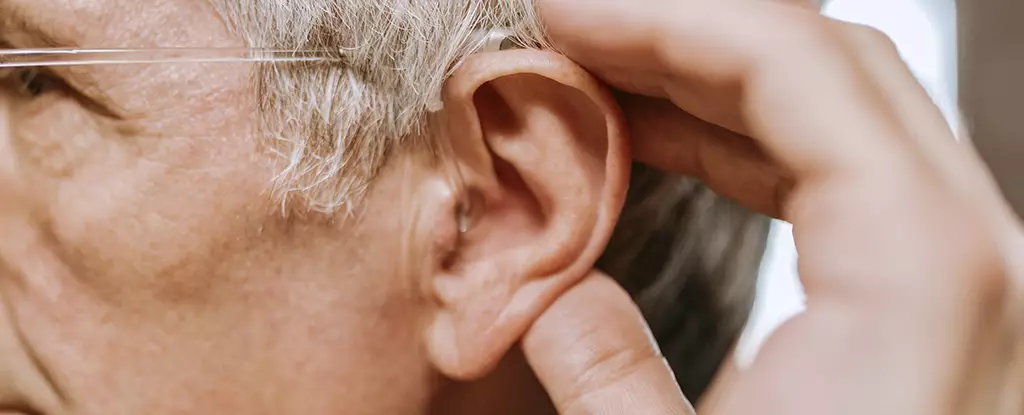In a groundbreaking investigation, researchers at Yale University delved into the complexities of human hearing to unravel the mysteries of low-frequency sound perception. The study, led by physicist Benjamin Machta, initially set out to explore how the inner ear, particularly the cochlea, can detect faint sound waves without becoming overwhelmed by extraneous noise. This intriguing research not only brought forth insights into sound detection but also unveiled a previously unrecognized mechanism by which our auditory system copes with low-frequency sound waves.
The cochlea, a spiral-shaped organ central to our hearing abilities, functions through intricate mechanical processes. Machta and his team’s mathematical models spotlighted how the cochlea manages sound waves to ensure we can discern significant noises from background clatter. At the heart of this research is the process where vibrations stimulate sensitive hair cells within the cochlea’s membrane. When these vibrations occur, they induce electrical signals that journey to the brain, forming the basis of our auditory experience.
Interestingly, previous research had already established that localized patches of hair cells within the cochlea can enhance surface vibrations, ensuring critical sound frequencies are amplified for our perception. What Machta’s research has revealed, however, is that the cochlea possesses an inherent ability to generalize this functionality across its entire structure, particularly for lower frequency sounds. This discovery suggests a sophisticated layer of acoustic management not previously understood, allowing the cochlea to combat interference from noise while maintaining clarity in sound perception.
As the findings unfold, the cochlea’s dual functionality gives rise to astonishing implications. Research indicates that the hair cells lining the basilar membrane can adapt fluidly, responding not only to localized sounds but also tuning collectively to manage a broad range of frequencies. This adaptability plays an essential role in preventing auditory overload from louder sounds, ensuring that our hearing remains finely tuned even in noisy environments.
The critical breakthrough in this study centers on the cochlea’s ability to engage large sections of the basilar membrane as a unified entity when processing low-frequency sounds. By synchronizing the response of numerous hair cell patches, the cochlea effectively filters out unwanted auditory signals, thus enhancing the clarity of important acoustics. This “collective tuning” mechanism underscores the cochlea’s complexity and suggests that the interplay of sound waves and the organ’s mechanical properties are far more intricate than previously recognized.
Implications for Hearing Research
The repercussions of this research extend far beyond academic curiosity. The insights gleaned from Machta and his team illuminate potential pathways for understanding various hearing impairments and their origins. By comprehending how low-frequency sound detection works, researchers can initiate targeted studies aimed at identifying and potentially correcting dysfunctions within the cochlea.
Isabella Graf, a biophysicist who contributed to this groundbreaking research, emphasizes that these findings could significantly enrich our grasp of low-frequency hearing—an area that remains complex and not fully mastered in auditory science. The range of low-frequency sounds, spanning from 20 Hz to 1000 Hz, plays a pivotal role in our everyday auditory experiences, and improving our understanding of how these sounds are processed can open avenues for new therapies.
The Yale research has provided a significant leap forward in our understanding of cochlear function and sound perception. The discovery of how the inner ear manages low-frequency sounds not only enhances our scientific knowledge but also underscores the complexity and adaptability of the auditory system. This exploration holds immense potential for future inquiries, offering hope for advancements in hearing health and treatment. As researchers continue to unpack the nuanced mechanics of the ear, we may yet unveil more secrets that define our auditory experiences in a world filled with sound.


Leave a Reply